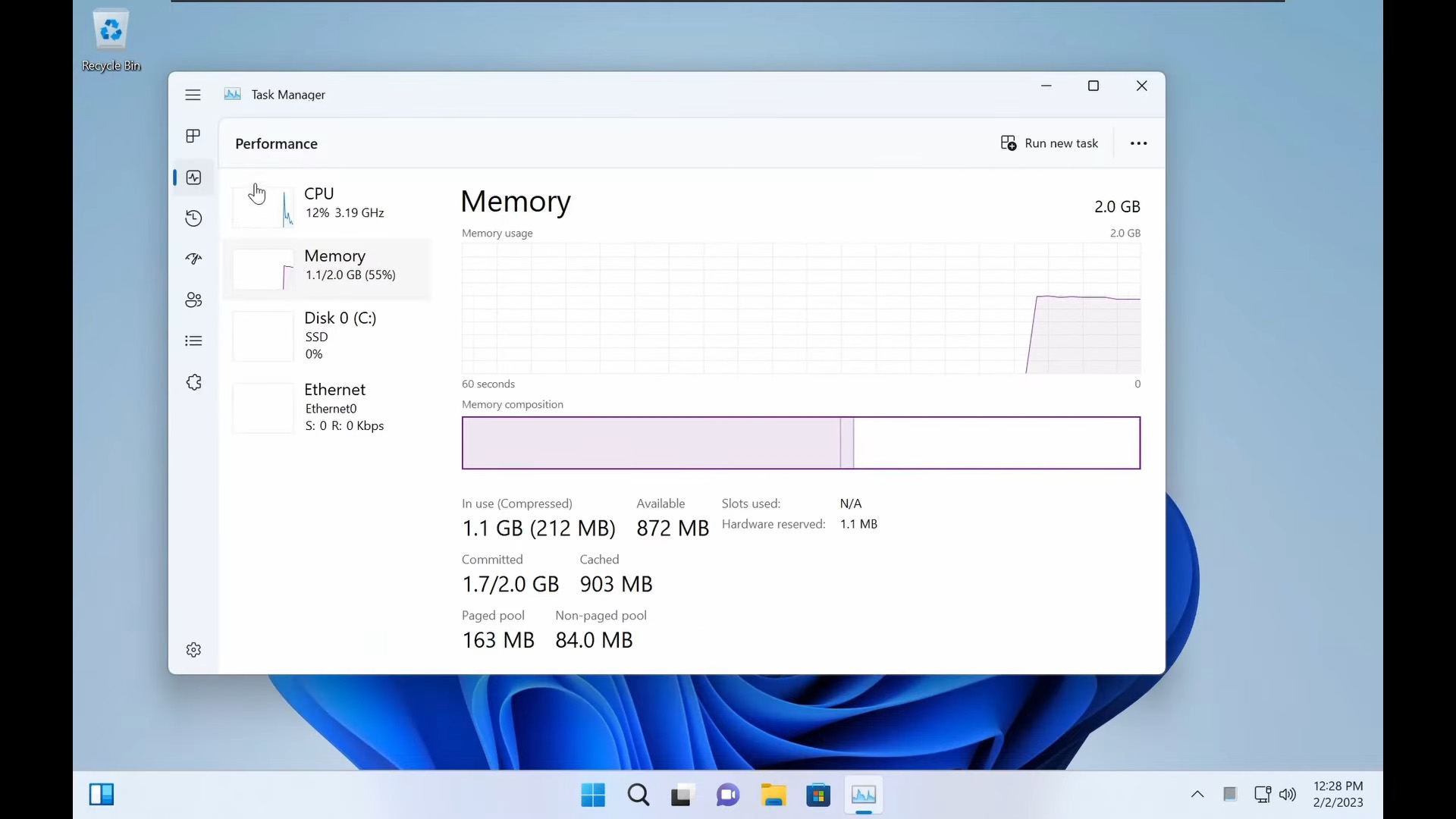Tiny11 review: Windows 11 with only 2GB of RAM
A version of Windows 11 for older machines that don't meet the full requirements

-
+
Perfect for older laptops/PCs
-
+
Easy to download; Free
- +
-
-
Limited version of Windows 11
Tiny11 is a stripped-down version of Windows 11. Where the full-fat OS requires 4GB of RAM and 64GB of drive space, Tiny11 can manage with 2GB and 8GB respectively. It looks like the perfect solution for older machines that fall short of Windows 11's specs as, in the developer's words, it will run on "basically any computer that also ran Windows 10".
READ MORE

That might leave you wondering why Microsoft, with all of its resources, didn't manage the same. The answer is most likely that Microsoft didn't want to: its goal was to ship a feature-rich operating system that was a genuine step up from Windows 10, rather than a minimized working environment.
Tiny11 developer NTDev hasn't stripped out everything. Accessibility features and smaller apps such as the Calculator and Notepad, plus Windows Terminal and PowerShell, have all been retained. Microsoft Store is also in there, so you can manually update applications and add new ones as required.
The most obvious benefit of Tiny11 is that it should continue running efficiently on older hardware over the longer term, not merely the next year or two. Nor does it come with Microsoft bloatware: both Edge and Teams have been removed. You can add them from the Microsoft Store, or choose an alternative browser and log in to Teams on the web.
Tiny11: Installation
There are two versions of Tiny11 available for download, one of which is designed for older hardware that lacks support for TPM2; this handles on-device encryption and was a key requirement blocking many users from upgrading incompatible machines. It's worth noting that Tiny11 does not require a secure boot.
You could install a regular build of Windows 11 and strip out the features you don't require. There are utilities to help you achieve this, such as Debloos/BloatyNosy, which can analyze your system and automatically remove what it considers bloatware, or give you the option of manually removing components you don't need and have no plans to use.
However, you can only access post-production apps such as BloatyNosy if you've already successfully installed Windows 11, which won't always be possible. Tiny11, on the other hand, is an all-in-one solution where installation is possible precisely because it's been stripped down in advance.
Sign up today and you will receive a free copy of our Future Focus 2025 report - the leading guidance on AI, cybersecurity and other IT challenges as per 700+ senior executives

The benefit of sticking with an operating system based on Windows 11 is that you can continue running the applications you already use. There's no need to use a workaround such as WINE under Linux, and nor is there any need to learn how to use a new OS or apps. You can avoid converting your data from its original formats, too.
By default, Tiny11 uses a local account, rather than a Microsoft account, so your activities are less intimately linked to your profile (you can revert to a Microsoft account if you prefer). If you're particular about your privacy, this could be a reason to switch on your own – particularly as Microsoft is now encouraging Microsoft account login as the standard option.
Tiny11 hasn't come out of nowhere: it's a follow-on from Tiny10, so has been in active development for several years. As such, it's improving over time. The first release achieved its small size through the removal of the Windows Component Store, which made it impossible to add new features and languages.
However, release notes for the latest build state that the Windows Component Store is back, in a release that also sees the removal of sponsored apps.
Tiny11: Is it worth it?
So, are there reasons not to switch to Tiny11? For sure. First of all, it isn't an official build. It's not supported by Microsoft and there's no guarantee it will keep working in the future. Neither is Tiny11 a free operating system.
RELATED RESOURCE

Gartner® report: Market guide for zero trust network access
Reduce risk and securely support hybrid workforces
DOWNLOAD NOW
If you don't already have a code to activate Windows 11 Pro, you won't be able to activate Tiny11, so if you're installing it as a money-saving measure it could be worth taking another look at Linux. Unless you have to run Windows, that's still what we would recommend people do.
Tiny11 may be the best-known stripped-down build of Windows 11, but it isn't the only option. Ghost Spectre 11 likewise lets you install a debloated build on machines without TPM support.
ReviOS is another stripped-down OS, removing common tools such as Photos and Windows Mail. It also avoids pre-installed apps such as Disney, plus core features such as the Telemetry Client, screensavers, and themes. All of which is to say you have a choice. Download, play, and consider your options.
| RAM | 2GB |
| Storage | 8GB |
Nik Rawlinson is a journalist with over 20 years of experience writing for and editing some of the UK’s biggest technology magazines. He spent seven years as editor of MacUser magazine and has written for titles as diverse as Good Housekeeping, Men's Fitness, and PC Pro.
Over the years Nik has written numerous reviews and guides for ITPro, particularly on Linux distros, Windows, and other operating systems. His expertise also includes best practices for cloud apps, communications systems, and migrating between software and services.
-
 Qualcomm the data center with $2.4 billion Alphawave Semi acquisition
Qualcomm the data center with $2.4 billion Alphawave Semi acquisitionNews The move sees Qualcomm absorb Alphawave Semi’s portfolio of custom silicon, high-speed connectivity solutions, and chiplets
By Daniel Todd Published
-
 ‘If software development were an F1 race, these inefficiencies are the pit stops that eat into lap time’: Why developers need to sharpen their focus on documentation
‘If software development were an F1 race, these inefficiencies are the pit stops that eat into lap time’: Why developers need to sharpen their focus on documentationNews Poor documentation is a leading frustration for developers, research shows, but many are shirking responsibilities – and it's having a huge impact on efficiency.
By Ross Kelly Published
-
 OpenAI says GPT-5.2-Codex is its ‘most advanced agentic coding model yet’ – here’s what developers and cyber teams can expect
OpenAI says GPT-5.2-Codex is its ‘most advanced agentic coding model yet’ – here’s what developers and cyber teams can expectNews GPT-5.2 Codex is available immediately for paid ChatGPT users and API access will be rolled out in “coming weeks”
By Ross Kelly Published